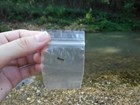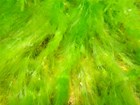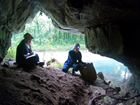Using Buffalo National River as a living laboratory, we can learn a lot about the natural world and its processes. These articles highlight the research and scientific endeavors that are happening now at Buffalo National River.
-
Buffalo National River
Article 1: Smallmouth Bass Abundance and Climate Change

Research suggests that climate change will likely affect the abundance of smallmouth bass in the Buffalo River. With the southern United States projected to warm by 5 to 7 degrees Fahrenheit by 2050, the suitable habitat range for smallmouth bass could shift and/or shrink as a result. Read more
-
Buffalo National River
Article 2: Mussels: Flexing for Water Quality

Continued water pollution and habitat changes have caused mussels to become one of the most rapidly declining animal groups in the United States. Healthy and diverse mussel populations indicate good water quality and ecosystem health. When mussel populations are in decline, this can indicate potential ecological concerns for other fish and wildlife, and even people. Read more
-
Buffalo National River
Article 3: Dragonflies as Metal Detectors

Spending years underwater eating insects and even small fish, dragonfly larvae (very young dragonflies) are high on the aquatic food chain. Each time a predator eats prey with mercury inside, that toxin builds up in the predator’s body. The build up of mercury in dragonfly larvae gives researchers an understanding of air and water quality. Read more
-
Buffalo National River
Article 4: Algae and Nutrient Sourcing

Algae is a natural part of any aquatic environment. Though it often makes swimmers, anglers, and paddlers go, “Ick!,” algae performs important ecological services like oxygen production and nutrient cycling. It also provides food and habitat for a host of organisms. Factors like air/water temperature, sunlight, nutrients, foraging pressure, and rainfall amounts can lead to algal growth. Read more
-
Buffalo National River
Article 5: Cave Mapping for Conservation

Over the past 3 decades, volunteers and partners have quadrupled the number of known caves at Buffalo National River. Through mapping and biological inventory surveys, members of the Cave Research Foundation have helped the National Park Service better understand the underground resources and how to manage them. Read more
